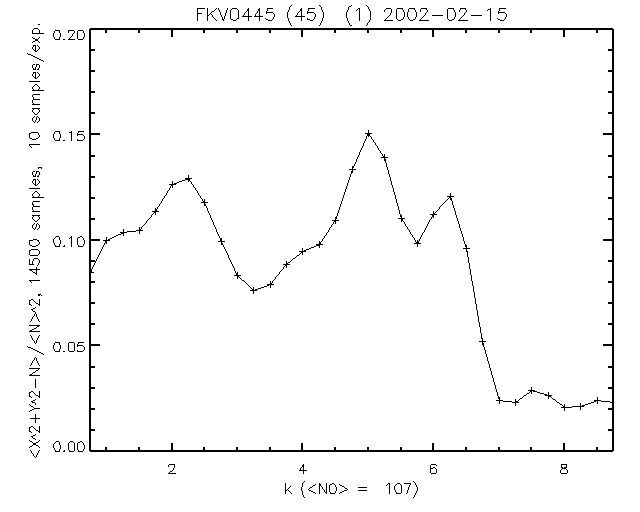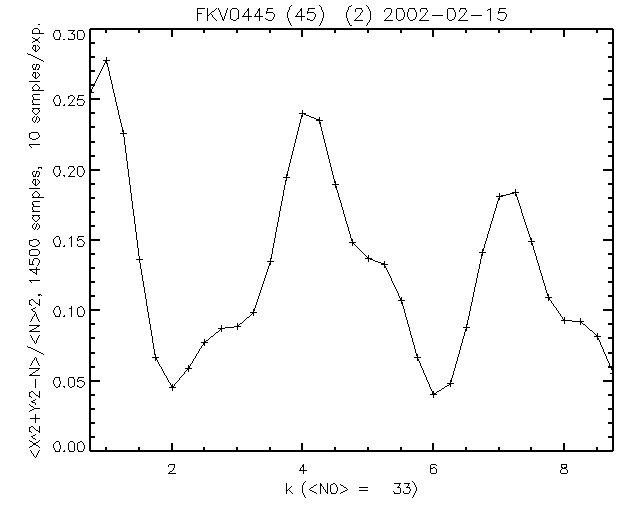
get_rawdata,'2002-02-15.raw.045'
HDS-file opened; mode=READ.
Scantable created.
% Compiled module: POLYFITW.
% Compiled module: STDEV.
GeoParms loaded.
GenConfig loaded.
Warning(DAT_FIND): component not found (METROCONFIG)!
Backgroundtable created.
Background data loaded.
% Compiled module: UNIQ.
StarTable created; number of entries = 1.
Finished reading catalogs.
Finished reading catalogs.
Number of new diameters added: 1.
Number of new (R-I) values found: 0.
Finished reading catalogs.
HDS file closed.
HDS-file opened; mode=READ.
HDS file closed.
HDS-file opened; mode=READ.
Raw data for star FKV0445 loaded.
NPOI uses a special "hybrid" beam combiner, which means it is neither an all-on-one, nor a pairwise combiner, but one which is in between. The one side of the final beamsplitter being used currently contains three beams of combined light, i.e. each beam (in OYSTER called OutputBeam) contains the light from four stations. Therefore, each output beam contains six baselines, for a total of 18. There are 3 duplicate baselines, since they appear in more than one output beam.
To see the baseline layout, look at the BaselineID field of the GenConfig (structure) variable.
OYSTER> print,genconfig.baselineid
E02-AE0 AW0-AE0 AW0-AN0 AN0-AE0 AN0-E02 AW0-E02Now use the procedure plot_fringepower,1 to produce a plot of the mean value of the (squared) visibility amplitude based on the incoherent average of 10 samples versus the modulation amplitude, called fringe modulation k. In this example, we plot first data of output beam 1.
AC0-E02 AC0-AW0 AW0-W07 AC0-W07 E02-W07 AW0-E02

